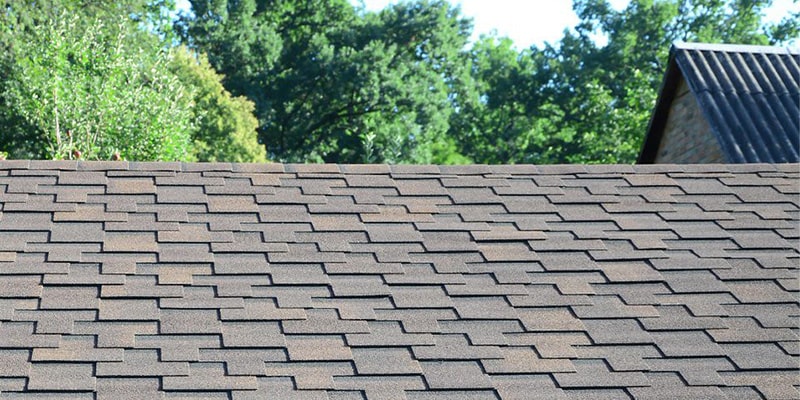Guide to Felt Shingles

Felt shingles are fast becoming one of the most popular roofing options for various properties, particularly garden structures, and there are numerous reasons for this. Despite their advantages, it is always important to know exactly what felt shingles can offer you and what they cannot.
What Are Roof Shingles?
Shingles are special roofing materials that can be placed along a pitched roof, creating a defined, uniform appearance that is watertight and able to withstand a wide array of weather and temperature conditions. Simple to apply, they can be applied to many different buildings, and usually don’t require a professional to install.
There are several different types of shingles made from various different materials. Felt, cedar and metal are all common shingle types, each one coming with their own pros and cons. Felt is no different in this respect but is a particular favourite among professional builders and DIY enthusiasts alike due to the many advantages it benefits from.
Felt shingles serve as an alternative to roofing felt and can be used without a finishing layer placed over the top. Due to this, they are often produced in a wide range of colours and patterns, giving customers dozens of choices and allowing them to pick out the best finishing look for their individual project.
Benefits of Felt Roofing Shingles
The popularity of felt shingles can be attributed to the numerous benefits they offer. The ease of installation, sometimes requiring just a wooden surface to fix them onto, makes them extremely appealing to a wide range of builders, from professionals to amateurs. Some are even self-adhesive, saving you time and resources during the application process, while others can be secured using anything from nails to screws to fixings.
Felt shingles tend to come in a much wider range of colours than most other shingle types, giving you far more choice when it comes to deciding on the cosmetic choices surrounding your project. A wide array of shapes and sizes are also available, allowing you to incorporate countless patterns and designs into your project, whether you want to retain a clear level of uniformity or are looking to achieve a much more adventurous appearance with varying forms and configurations.
They are extremely cost-effective products, available at lower prices than most other options and far cheaper to install and maintain. Felt shingles have the potential to last for many years, and though they eventually do wear and show signs of damage, replacing them is fast and easy. Though one of the main selling points of felt shingles is the relatively simple procedure required to install and replace them, their durability should not be underestimated. Felt is a surprisingly robust material and will be able to stand firm throughout any season, from intensely hot summers to sub-zero winters.
Best Structures for Felt Shingles
Felt shingles are especially ideal for various structures, especially those found in gardens. Sheds, stables, garages and lean-tos are all great candidates on which to apply them. There are several reasons behind the prevailing popularity of felt in the garden. Not only do the shingles add a level of protection against the elements, but they also add extra character and, when aged, give the structure a rustic appearance that blends in beautifully with the classic British garden aesthetic.
Due to the impermeable nature of felt shingles, they are perfect for putting on structures designed for storage and containment, whether this be on a shed protecting tools, stables for horses or even hutches for rabbits and other pets.
The Drawbacks of Felt Roofing Shingles
Though incredibly versatile and useful for a wide range of structures, there are certain drawbacks to felt that should be noted when considering it as an option for your project. One of the larger issues is that, while it possesses undeniably high levels of durability, there are more sturdy, robust options out there, including slate and clay tiles and metal shingles.
Felt does not possess the lifespan of some of these alternatives, and therefore while the overall process of application and preservation may end up cheaper, the inevitable fact is that frequent maintenance and replacement of felt shingle roofs are necessities. This could cause some difficulties for some, especially if the structure owner is of an older age and/or less able, or the maintenance procedure has to take place in the wetter winter months.
As with most materials, as felt ages its strength deteriorates, leaving it more vulnerable to tearing, cracking and other forms of damage. Most other tiles and shingles, though more expensive and more difficult to install, have a much longer life expectancy, making them more viable for structures that require a far more permanent protection.
These drawbacks mean that, while felt is ideal for garden structures, it is strongly recommended that it not be used for buildings with permanent human inhabitants, simply because there are far more suitable options on the market that will cater to the requirements of residential buildings regardless of their shape or size.
So, to conclude, felt shingles are ideal for you if you are looking for the following:
- An economic alternative to more expensive shingles and tiles
- An impermeable covering for a huge array of garden structures
- An incredibly fast and easy installation process
- An extremely simplified maintenance / replacement procedure
- A visually stunning roofing option available in a wide range of colours and patterns
However, you may want to look into alternative roofing options if you are looking for:
- An extremely long lifespan
- Minimal maintenance
- High impact resistance
- High tear resistance
- Ability to withstand traffic
Have Questions About Roof Shingles?
If you would like to know more about Felt Shingles, or about another product in our range, contact us by ringing us on 01295 565565, email us or chat to us online, and we’ll do our best to help you out.